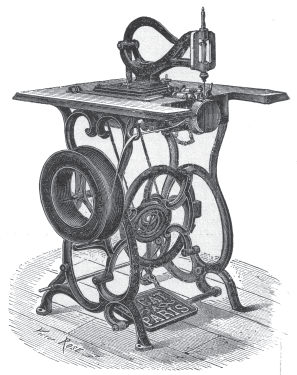
fig 3 Legat 'hand-stitch' machine
Hand Stitch Sewing Machines
In nineteenth and early twentieth century England no one would venture outdoors without a hat. In the summer this period was the heyday of the straw hat, with fine bonnets for the ladies, boaters for the gentlemen and even straw helmets for the policemen of Luton.
In England the industry was centred on Luton and Dunstable. In 1872 there were an estimated 1500 people employed in the area sewing hats and they were supplied by over 10 000 men, women and children plaiting the straw from which they were made.
Straw hats, then as now, were made by sewing together lengths of plaited straw in a spiral from button to brim. Production was limited by the rate at which they could be made up.
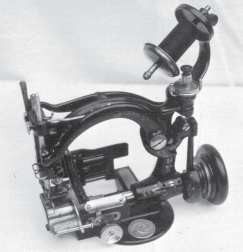
fig 1 Willcox and Gibbs'visible stitch' straw hat machinederived from their chain stitch machine
The earliest attempts to sew hats by machine were in 1865. However, it was not until 1873 that Mrs William Stratford, wife of the local Willcox and Gibbs agent, made the first complete hat on a sewing machine. Willcox and Gibbs mechanics worked on the problem and, in 1875, produced a purpose-built version of their classic chain stitch machine.
This was known as the 'visible stitch' machine (Figure 1) and was an immediate success. 1500 machines were sold in the first two years and it remained popular to the end of the industry. There was a Singer version and also German copies such as the 'Asema' made by H. Grossmann of Dresden (Figure 2) for a Luton sewing machine dealer, Janes Brothers Ltd.
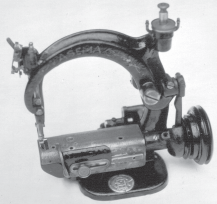
fig 2 'Asema' straw hat machineby Grossmann of Dresden
The market for quality ladies' hats demanded a machine for delicate plaits and able to simulate hand stitching. Various inventors had a go at hand stitch machines. An early one was the French Legat machine (Figure 3) of 1875. It was cumbersome, expensive and slow. In 1878 Edmund Wiseman of Luton patented his 'concealed-stitch' machine (Patent 2485 of 22nd June 1878) (Figure 4) which was half the price and used less thread than the 'visible stitch' machine. Wiseman's patent was developed by Willcox and Gibbs into its 'hand-stitch' machine (Figure 5) of 1886. All the cams, rockers and mechanism were inside the cast iron box and it became known as the 'box' machine.
The hand stitch machine produces a single thread chain stitch seam which looks on the top side like hand stitching with gaps between adjacent stitches (Figure 6). It is, however, a locked stitch which will not pull out like the standard single thread chain stitch. To make its stitch the machine uses two needles mounted on a common bar. The needles come up through the plait or material from below (Figure 7). One (A) has an eye near the point like an ordinary sewing machine needle; the other (B) has a barbed hook like a tiny crochet hook.

fig 5 Willcox and Gibbs 'hand-stitch' machine, the 'box' machine
Needle (A) brings a loop of thread up through the plait and picker (C) takes the loop across from (A) to (B) (Figures 7, 8 & 9). When the needles drop below the plait they leave a stitch on the topside, of length equal to the separation of the two needles. The feed mechanism then moves the plait along a distance equal to the separation of the needles plus the length of the gap. The stitch uses 20% less thread than the 'visible stitch' machine and the machine produced a seam 'superior to any hand stitching'.
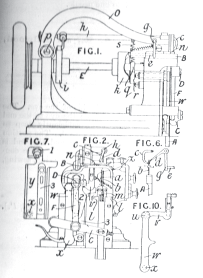
fig 4 Wiseman1878 patent drawing
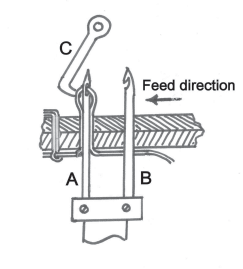
fig 7 Stitch formation diagramfor the hand stitch machine

fig 6 The hand stitchusing a single locked thread
In its Golden Jubilee booklet of 1909 Willcox and Gibbs stressed the adaptability, speed and capacity of the 'hand-stitch' machine. They claimed that an operator, working continuously for 10 hours, at the longest stitch and at full speed, would sew nearly five miles of plait. By foot power alone, 144 hats could be made by a hat maker in a 10 hour day! With the production of one hat every four minutes per machine and with thousands of machines in use, it is small wonder that the English plaiting industry collapsed and cheaper plait from the Far East was imported.

Fig 8 Detail of the needle mounting of a 'Lutonia' hand stitch machine
After the Wiseman patent expired the basic mechanism was incorporated in the 'Lutonia' machine (Figure 10) patented by F.C.W. and W.W. Janes of Luton (Patent 10920 of 1st June 1895). Janes were the local competition for Willcox and Gibbs in Luton and, like the 'Asema' and 'Dresdensia' had their machines made by H. Grossmann in Dresden.
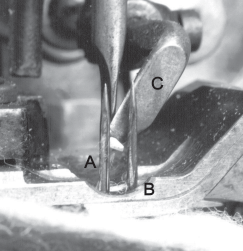
fig 9 The picker taking theloop of thread from the needleafter it has come up through the felt
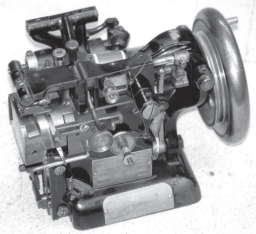
fig 10 Janes 'Lutonia'hand stitch machine(original version)
Hand stitch machines were also used on felt and other non-woven fabrics in the hat industry. They are still used in the fashion trade for decorative 'saddle' and 'hand' stitching so the machines crop up fairly frequently.
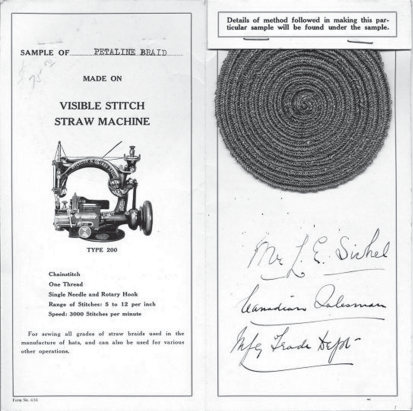
Manufacturers sample card for the visible stitch machine
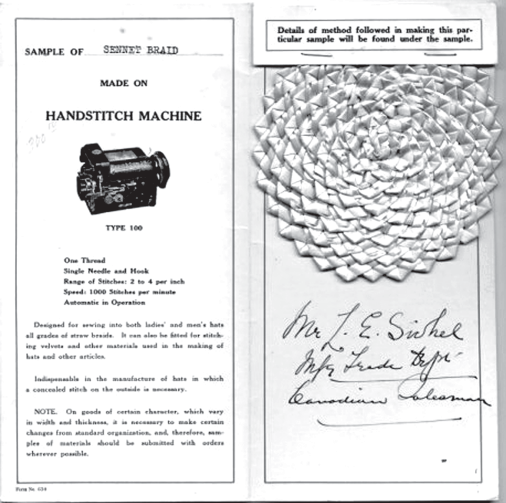
manufacturers sample card for the handstitch machine
Sample card pictures provided by Ruth Mills, Milliner www.ruthmills.com






